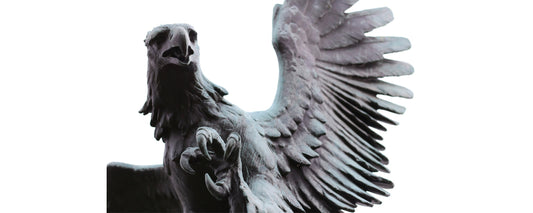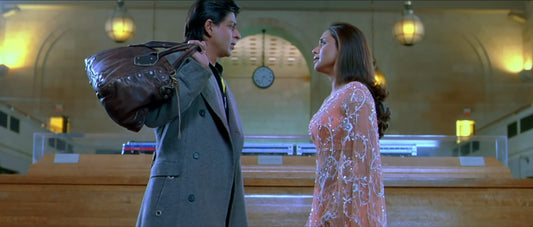Aristotle, in his Poetics (ca. 330 B.C.), claimed that a poet’s function is not “to relate what has happened, but what may happen…” In his Preface to Lyrical Ballads (1802), William Wordsworth wrote that “all good poetry is the spontaneous overflow of powerful feelings…” And in the last line of his poem “Ars Poetica” (1926), Archibald MacLeish ventured, “A poem should not mean / But be.”
None of these famous descriptions, however, are a match for Beyond Words: Experimental Poetry and the Avant-Garde, currently on view at the Beinecke Rare Book & Manuscript Library, which shows just how “experimental” poetry can be and leaves you considering just what makes a poem a poem.
sponsored by
Although Beyond Words spends most of its time in the fertile experimental ground of the 20th century, it begins within a much older context: Aristotle’s own age, when Greek technopaignia (“games of skill”) “drew significance not only from words, but also from their physical arrangement in patterns.” The first item is a 13th-century manuscript conjuring ancient Greece, in which “the ‘words’ themselves consist largely of strange-sounding names of deities, transcribed into Latin from Arabic translations of the original Greek text.” On the left page, a series of broken, concentric red-lined rings is filled with text. On the right, a diamond within a square serves as the scaffold for triangular and rectangular blocks of text. Both pages suggest an archaic book of spells, which isn’t even a stretch. “As prayers and magical incantations, they likely point back to earlier traditions and were in turn passed on by medieval scribes who painfully copied them (and no doubt added embellishments of their own) over a millennium later,” curator Kevin Repp writes in the exhibition catalog.
From that ancient context, Beyond Words leaps ahead to the 20th century. The French poet Stéphane Mallarmé launched the modern “experimental” phase of poetry, breaking not only with traditions of rhyme and meter but with ideas about text and the page. Whether or not you can read French, you’ll instantly see the revolutionary use of the page as a canvas for words in Mallarmé’s poetry, which deploys a variety of text fonts and sizes and treats the blank space on the page as part of the poem.
The exhibition’s timeline then takes viewers through a list of “ists”: the Dadaists, the Russian Constructivists, the Lettrists, the Situationists, the Ultralettrists. The Italian Futurists went beyond experimenting with text and layout to question the function of words altogether, launching “a ‘typographic revolution’ aimed at freeing words from the straightjacket of sense-making and poetic convention,” Repp writes. If all this seems a purely academic exercise, think again. The acolytes of each new movement often viciously derided those who had come before them and occasionally came to blows. One Lettrist “militant” attacked a conference speaker, using a chair as a weapon.
In presenting these heady, sometimes rowdy pursuits, Beyond Words offers up not only manuscripts but also recordings, allowing you to listen in on poets experimenting with sound—sometimes the sounds of letters and words, at other times the sounds of the human voice itself. Henri Chopin’s poem “Pêche de nuit” (“Night Fishing,” 1957), for example, is a layered, distorted song of sorts that uses the human voice and manipulations of the tape on which it was recorded to create a ghostly, underwater sound world of drips, pops, moans and whispers. It suggests not so much the man in the boat above the water as the fish in the water below, navigating an ever-treacherous social landscape of their own. You might well ask: Is this a poem?
You might ask the same about Bifrost for Viola by David Jhave Johnston, a computer-generated projection framed by a panel of the library’s marble walls. Letters of the alphabet in different type faces melt and morph under the pressure of a milky, muddy, cascading liquid or are reconstituted from liquid form into their formal characters. The mesmerizing movement suggests the fluidity of these symbols in an aesthetic era that questions the “meaning” of any symbol and at the same time the letters’ durability through time.
An entire case on the mezzanine is devoted to the work of Ugo Carrega, which draws attention to its own medium, unlike a poem typed on a piece of paper that’s simply a necessary form of conveyance. Jagged shards of glass stand upright, one behind another, in Non si muore solo di fame, ma… (“You Don’t Die of Hunger Alone, but…”). On each shard in blood red script is one of the words from the title, a visual sequence seen scrambled together through the broken glass like a litany of accumulating brutalities. Is this a poem, too?
And what about physical performances like Alain Arias-Misson’s? In 1967, he stuffed plastic tubing with newspaper, wrapped it in surgical bandages, splattered it with red paint and fashioned it into human-sized letters spelling the word “Vietnam,” then mounted them at a tram stop in Brussels. His blurry photographs, taken in the fleeting moment, record the “public poem.” “Vietnam, a word everybody read a thousand times until it has disappeared, here it was, big as life,” the poet later said. “Vietnam was real, bloody real.”
The answer to the dogged question, as far as these poets and Beyond Words is concerned, is a resounding yes: these are all poems. It’s interesting to watch the poets struggle to express themselves as they work with letters and words and question whether and how meaning can or should be salvaged from them. But there are also some “glaring” omissions here, as the Beinecke itself puts it. The almost exclusive focus on continental Europe makes it challenging at times to fully appreciate the work, since much of it was not written in English. And the experimental endeavor—at least, as presented here—is disappointingly male-dominated, at times addressing the objectification of women in mass media, for example, but rarely from the perspective of a woman poet.
Still, anyone who values words—in other words, every one of us—has a stake in Beyond Words, even as it encourages us to transcend them for a little while.
Beyond Words: Experimental Poetry and the Avant-Garde
Beinecke Rare Book & Manuscript Library – 121 Wall St, New Haven (map)
Mon 10am-7pm, Tues-Thurs 9am-7pm, Fri 9am-5pm, Sat noon-5pm, Sun noon-4pm through 12/15
(203) 432-2977 | beinecke.library@yale.edu
www.beinecke.library.yale.edu/beyondwords
Written by Kathy Leonard Czepiel. Images 1, 2 and 4 photographed by Kathy Leonard Czepiel. Images 3 and 5, which were cropped to fit, provided courtesy of the Beinecke Rare Book & Manuscript Library.
Photo Key:
1. Ugo Carrega, Non si muore solo di fame, ma….
2. Apollonius (Tyanensis?), Ars Notoria, Sive Flores Aurei (c. 1225).
3. Jean-François Bory, Fin de mots (1979).
4. David Jhave Johnston, Bifrost for Viola.
5. Ugo Carrega, Torre di Babele (2007).








